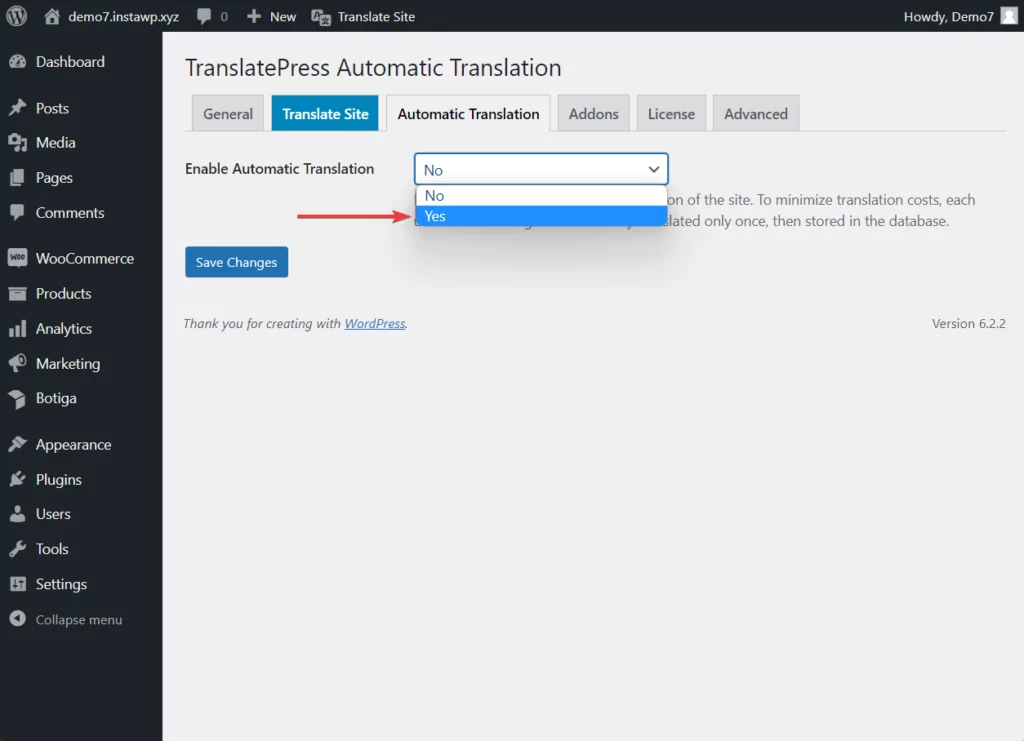Are you looking for ways to implement cross-border eCommerce on your online store?
Implementing cross-border eCommerce is a great way to expand your business, draw more traffic to your online store, and generate more revenue collection.
In this article, we will dive deep into the many advantages and disadvantages of cross-border eCommerce and how to successfully implement one on your online store.
Let’s get started.
What is Cross-Border eCommerce?
The term “cross-border eCommerce” refers to the online selling of goods to customers from around the globe.
Today, it’s easier than ever to implement cross-border eCommerce due to reasons like:
- Widespread availability of the internet
- Growing appetite among consumers to buy products that aren’t locally available
- Easy payment processing
- Reliable logistics and shipping methods
- Better trade agreements between countries, elimination or reduction of import duties and other trading barriers, among other things
While industry leaders like Amazon, AliExpress, eBay, etc are established players in the cross-border eCommerce business, a growing number of small businesses also leverage the power of cross-border eCommerce to expand their reach and tap into international markets.
According to Statista, the global B2C cross-border eCommerce market will surge to a staggering 7.9 trillion U.S. dollars by 2030.

Given the immense potential and opportunities in cross-border eCommerce in the coming years, it’s the perfect time to implement some cross-border eCommerce strategies on your online store and capitalize on the growing global market.
In this article, we will show you how to do just that but first, let’s take a deep dive into the benefits and challenges of cross-border eCommerce.
Cross-Border eCommerce Benefits
These are some of the benefits of implementing cross-border eCommerce:
Expanded Customer Base: By engaging in cross-border eCommerce, you can access a larger customer base beyond the domestic market.
Increased Revenue Collection: It allows you to sell products to customers in different countries including products with low domestic demands. This can lead to more sales and revenue collection.
Off-Season Safety Net: In domestic markets, demand for products peaks during special occasions and dips during the off-season. Selling products to the international market ensures demand all year round.
Brand Awareness & Trust: Selling products in an international market helps reach a global audience, and generates word-of-mouth and social sharing opportunities. This could result in better brand visibility and trust in the domestic and international markets.
Increased Business Sustainability: By reducing dependence on a single domestic market and diversifying revenue streams businesses can mitigate risks associated with local economic fluctuations and ensure long-term growth.
Now that we know about the benefits, let’s take a look at the challenges of implementing cross-border eCommerce on an online store.
Cross-Border eCommerce Challenges
The following are the challenges of implementing cross-border eCommerce:
Complexities in Logistics & Shipping Processes: Although selling products to international customers is easier than ever, it’s still difficult to navigate international shipping processes, coordinate logistics, manage shipping costs, and ensure smooth customs clearance.
Cultural Barriers & Localization Efforts: Understanding cultural nuances is challenging. Businesses need to carry out extensive research to identify cultural preferences in target markets.
This should be followed by localization of the website, product description, customer support, and marketing endeavors, among other things. Adjusting to a different culture requires a lot of effort, time, and monetary investment.
Currency Conversions: Converting one currency into another during cross-border transactions involves dealing with fluctuating exchange rates, which can lead to potential discrepancies between displayed prices and actual amounts paid. This could cause a bad customer experience and loss of customer trust.
Payment Preferences: Different countries have different payment preferences. For example, credit cards are widely used in some countries, while other countries prefer digital wallets, bank transfers, or localized payment methods like Alipay or WeChat Pay.
Payment Security Concerns: Ensuring that customer payments are securely processed, encrypted, and protected throughout the entire transaction process is a challenge due to the complexity of payment systems, evolving cyber threats, and difficulty in navigating varying legal frameworks and regulations across different countries.
Refunds: Businesses have to navigate varying consumer protection laws and refund policies while providing seamless customer service and maintaining customer satisfaction.
Now that you are aware of all the benefits and challenges of cross-border eCommerce, let’s dive into how to implement it on your online store.
How to Implement Cross-Border eCommerce on Your Online Store
To implement cross-border eCommerce on your online store, you need to take the following steps:
1. Conduct Extensive Market Research
Before starting to implement cross-border eCommerce strategies, it’s essential to conduct extensive market research because it helps identify potential markets for your business.
Your market research should include understanding consumer behavior, competition, cultural nuances, and legal and logistical challenges.
- Analyzing consumer behavior helps businesses understand customer preferences, motivations, and behavior patterns.
- Assessing competitor strengths and weaknesses helps businesses identify opportunities, develop effective marketing strategies, and set realistic goals.
- Understanding cultural nuances involves recognizing unique customs, values, beliefs, and behaviors of different cultures.
- Familiarizing yourself with local regulations, laws, and compliance requirements will enable you to address them and ensure smooth operations in foreign markets proactively.
A thorough market research helps businesses tailor their marketing strategies, product development, messaging, pricing, and customer experience to meet local customer needs effectively.
Here’s a guide on how to conduct online market research.
2. Determine Pricing Strategies
Following thorough market research, you should have information regarding production costs, currency exchange rates, shipping fees, and local market conditions. Knowledge about these factors helps determine pricing strategies for your products.
- Production costs include indirect costs such as overhead expenses, marketing, distribution, and other operational expenses.
- Exchange rates often fluctuate as they are determined by factors such as supply and demand dynamics, interest rates, inflation, geopolitical events, and market sentiment. By monitoring exchange rates you can adjust your prices accordingly to help businesses navigate currency fluctuations and maintain business profitability.
- Businesses should consider shipping costs associated with packaging, transportation, customs, and other logistical expenses.
- Businesses should also take into account factors such as demand, competition, and customer purchasing power because they can significantly influence how businesses set prices.
3. Localize Website
Localization of a website refers to customizing a website’s content and design to suit the preferences, cultural norms, and language of a specific target market.
Localization can be implemented using human or machine translation tools. You can opt for translation agencies, freelance translators, or translation tools like TranslatePress to localize your eCommerce website.

Depending on the type of content that needs translations, all these services offer options to implement human and machine translation tools to translate websites.
TranslatePress Multilingual
TranslatePress is the easiest way to translate your WordPress site. It's fast, won't slow down your website, works with ANY theme or plugin and it's SEO friendly.
Get the pluginLearn more about the different types of translation services and follow these guides to implement localization on your website:
4. Localize Customer Support
Offering multilingual customer support is vital for overcoming language barriers and providing personalized experiences. It helps businesses navigate cultural nuances, comply with local regulations, and build trust with customers, leading to higher satisfaction and success in international markets.
To localize customer support, you need to implement the following steps:
- Understand the cultural norms, preferences, and specific needs of customers in your target market.
- Recruit customer care representatives fluent in the languages spoken in your target market.
- Provide comprehensive training on cultural nuance and customer service best practices to customer care representatives.
- Continuously gather customer feedback to identify areas for improvement.
- Tailor support processes to align with local regulations, legal requirements, and customer expectations.
5. Leverage 3rd Party Logistics Services
Instead of handling international shipping on your own, you can hire 3rd party logistic services (3PL) as they bring expertise and efficiency while also freeing up your time which you can use to focus on other aspects of your business.
3rd party logistics services have established networks, resources, and infrastructure which they use to optimize transportation routes and negotiate favorable shipping rates which makes them more cost-effective.
It is however essential to evaluate the specific pricing structure and services offered by different 3PL service providers to determine their cost-effectiveness for your business.
Read this article to learn more about 3rd party logistic services, their benefits, disadvantages, types of 3PL services, and how to choose a 3PL service provider for your business, among other things.
6. Localize Marketing Strategies
Localized marketing strategies enable businesses to establish a personal connection with customers, improve communication, and drive higher brand awareness, customer engagement, and conversion rates.
The strategies involve overcoming language barriers, understanding unique cultural preferences and behaviors of target markets, and tailoring marketing messages, visuals, and campaigns accordingly.
We have dived deep into how to perform localized marketing in a separate article. Take a look.
7. Add Varying Payment Method
By accommodating diverse payment preferences, businesses can improve conversion rates, enhance trust, and create a more seamless shopping experience for customers.
You can add credit cards, digital wallets, bank transfers, or local payment methods to your online store.

The process of adding various payment gateways depends on the platform your website is built on.
If your website is built on WordPress, you can easily incorporate different payment gateways using plugins like WooCommerce, and Easy Digital Downloads. These plugins allow you to integrate with popular payment providers such as PayPal, Stripe, Payoneer, etc.
But suppose your website is built on Shopify. In that case, you can leverage the built-in payment gateway options or explore additional gateways available through the Shopify App Store like Shopify Payments, PayPal, Stripe, and many more.
When adding multiple payment gateways, be sure to convert prices into local currency so that customers can easily understand the cost of products and make informed purchasing decisions. It creates a transparent and secure shopping experience.
8. Comply With International Regulations & Data Privacy Laws
Your business should adhere to specific laws surrounding cross-border transactions, consumer protection, data privacy, and taxation of your target countries.
It helps protect the rights of your customers, builds trust and confidence in your brand, and reduces the risk of legal issues and penalties.
To start compliance with international regulations and data privacy laws, begin by researching and understanding laws and regulations in your target countries. Also, we highly recommend that you seek expert advice from legal professionals or consultants specializing in international regulations and data privacy laws.
9. Optimize Continuously
After implementing the points we just listed, it’s important to constantly monitor how your business is performing.
Some of the business aspects that you should be monitoring include website traffic, conversion rates, average order value, customer feedback, and customer retention.
By tracking these metrics, you can identify areas that need improvement and make data-driven decisions to optimize your business and maximize its potential in international markets.
Conclusion
Although cross-border eCommerce is a time-consuming, expensive, and challenging process when implemented properly, it’s a great way to draw more customers and boost your revenue collection.
To successfully implement cross-border eCommerce, you need to implement the following steps:
- Conduct extensive market research to understand your target market
- Determine pricing strategies
- Localize website, customer support, and marketing strategies
- Leverage 3rd party logistics
- Add multiple payment gateways
- Comply with international regulations and data privacy laws
- Optimize continuously
If you have any questions about cross-border eCommerce, let us know in the comment section below.


